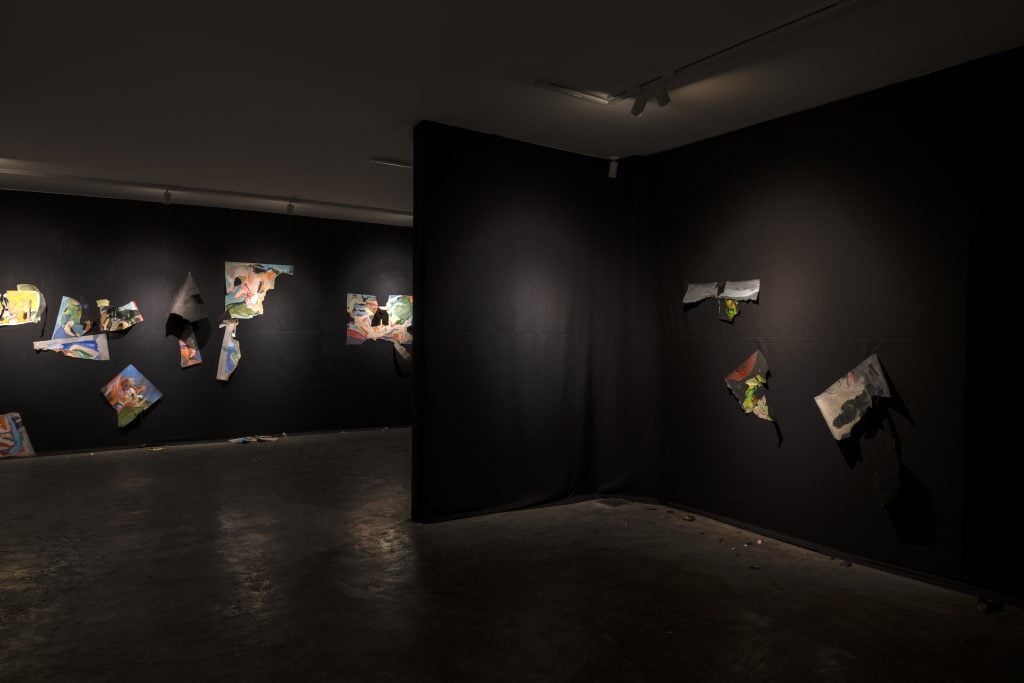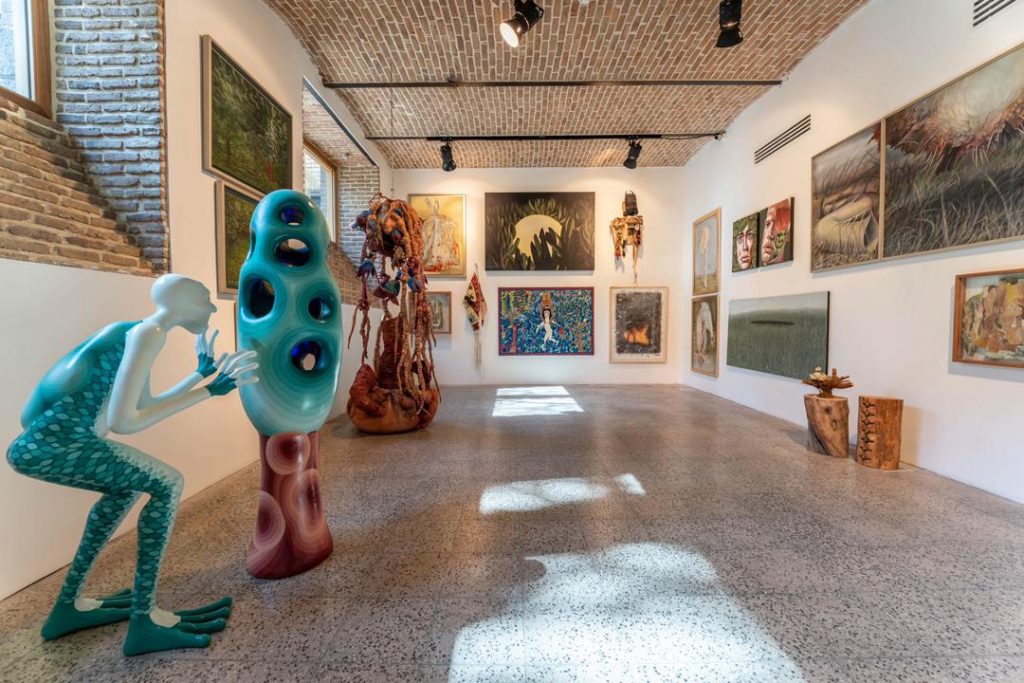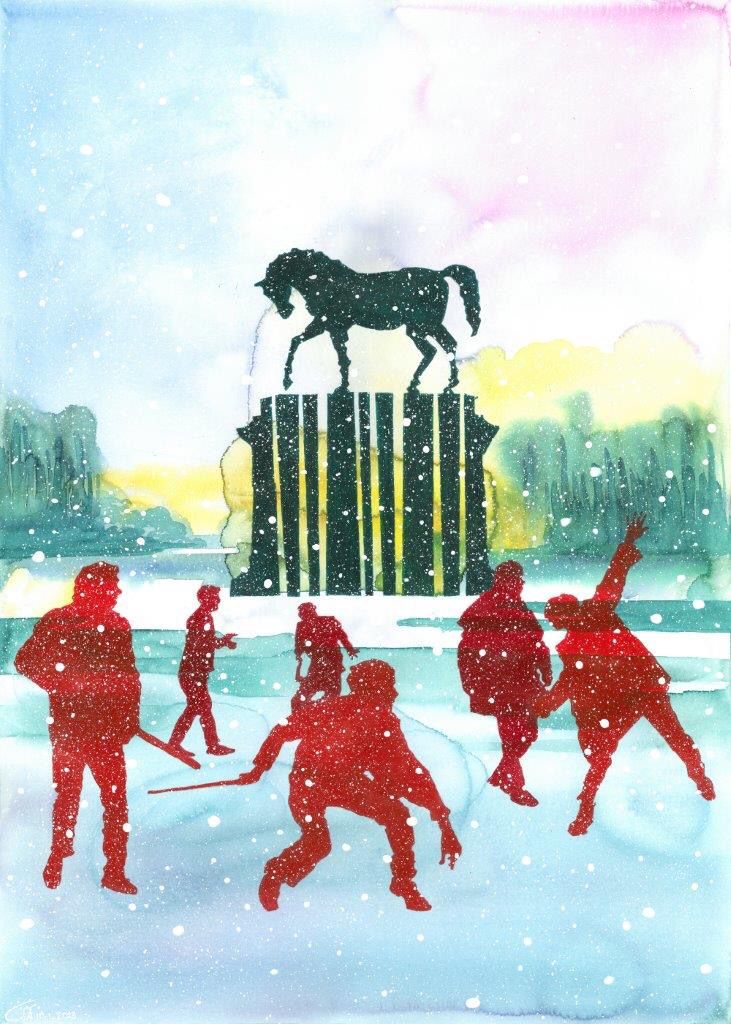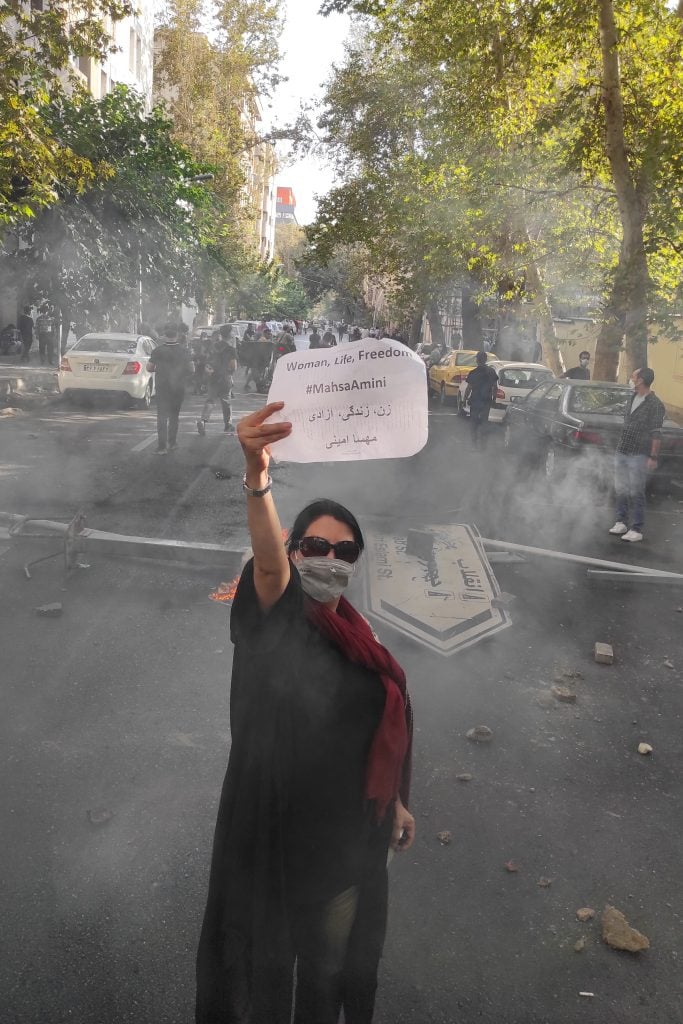Gallery O owner Orkideh Daroodi bravely reopened the doors of her gallery in Tehran on November 4 after a month and a half of intense protests and upheaval following the death of 22-year-old Mahsa Amini in police custody. .
Reopening the gallery and holding exhibitions was risky during a time of unrest and violent repression by the Iranian government. It was also socially risky. Galleries and many other businesses initially closed in solidarity with the protests. When Daroodi announced her reopening on Instagram, she immediately faced backlash from some members of the art scene, who saw the return to business as a lack of solidarity with the protests. Several other galleries that reopened in November without making a public announcement faced a similar situation. On the morning of the gallery’s reopening, someone splashed red paint on the gallery’s door and steps. The message was clear.
“They accused us of opening at the wrong time. But when is the right time?” Daroodi told Artnet News. “Our opening coincided with the day when many people were on the streets, killed and imprisoned, and we were cursed endlessly saying that we don’t care. of citizens’ lives and that all that mattered to us was money. But in fact, by being open, we were showing resistance and really living the slogan woman, life, freedom.
While Daroodi and other Iranian gallerists have resumed holding exhibitions and selling art, some remain reluctant to hold individual exhibitions for security reasons, fearing to anger protesters as much as draw public opinion. attention of the oppressive Islamic regime.

Zahra Shahcheraghi’s solo exhibition “Swan’s Death” was presented at O Gallery from January 20 to February 7. The artist covered the entire space with black fabric to symbolize the state of mourning.
Indeed, protesters are far from the only concern facing galleries in Iran. Along with the fact that businesses need to reopen to stay afloat financially, Daroodi and others believe art also has a role to play in the crisis – and makes a more powerful statement when gallery doors are kept up. open.
“We’ve always had problems trying to keep our doors open, fighting censorship and always fighting for freedom,” Daroodi said.
Another female gallerist spoke to Artnet News on condition of anonymity out of concern for her safety. At the height of the protests, she used her gallery to shelter protesters. Subsequently, she received repeated calls from the government threatening to shut down her space. The threats have since subsided. “For now, it seems that they [the Iranian state] don’t want too much noise,” she said. “However, they now encourage submission through fear.”
Other artists and gallery owners repeated his assessment that the situation is calmer now, with fewer protests, but with recent incidents such as the gas poisoning of several hundred schoolgirls, many believe that new troubles are on the horizon.

Installation view, “For Life” at Aaran Gallery in Tehran.
Back to business amid fear
Most galleries in Tehran, which number around 50, are now open for business. (The Assar Gallery, among several others, remains closed). But what kind of business can one do?
For Dastan’s Basement, the focus is on overseas business. Hormoz Hematian, the gallery’s owner and director, has been making the art fair circuit, most recently showing at Frieze LA and Art Dubai. The home gallery remains open but does not hold exhibitions.
For those fully reopening, there is clearly an appetite for art. When the Tehran-based Aaran Gallery held its first exhibition on February 24, titled “For Life” after the now famous protest slogan “baraye”, hundreds of people attended the grand opening. Gallery owner Nazila Noebashari told Artnet News that she sold works from the exhibition for around $5,000.
For many, business is only done in Iran, as finding ways to make payments and send money to the country remains as difficult for foreigners as it has been since the imposition of restrictions. first sanctions in 1979. Fortunately, “Iranians are buying again,” said Daroodi of Gallery O. While sales and attendance have yet to recover to pre-protest levels, she said that “it resumes”. His gallery currently sells art for between 5 million and 1,200,000,000 Iranian rials, or about $100-30,000 due to current exchange rates and runaway inflation.
 Mohammad Eskandi, U-turn (2023). Installation view, “For Life” at Aaran Gallery in Tehran.
Mohammad Eskandi, U-turn (2023). Installation view, “For Life” at Aaran Gallery in Tehran.
The dilemma facing Iranian artists
The situation of artists is different. For those who continue to actively protest and create art about the challenges around them, safety is a concern, and galleries are also hesitant to show work for fear of government reprisals.
For many, living and creating art means dealing with constant fear and uncertainty. A Tehran-based artist told Artnet News that during the first two months of the protests she could not make any art.
“After two months, to calm myself down and get through this difficult and strange period, I made an artist’s book in fabric, which cannot be presented inside Iran under these conditions, because it includes the names of those killed and the slogan ‘Women, Life, Freedom’ on them,” she said.
Even for those whose work is not overtly political, the upheaval has meant they have lost time and opportunities to show their work at home. The escalating cost of living, studio rent, and materials has also become prohibitive for many. “The price of art materials has now increased 10 times,” said a Tehran-based artist on condition of anonymity. “For young artists, it’s very difficult. More established artists are now offering young artists private lessons in their studios.

A protester holds up a note reading “Woman, Life, Freedom, #MahsaAmini” while marching down a street on October 1, 2022 in Tehran, Iran. Photo by Getty Images.
Many artists are now looking to exhibit their work outside the country, and Iranian work was a notable presence at the recent Art Dubai fair.
Tehran-based artist Behrang Samadzadegan recently applied for a Golden Visa, a special long-term residency granted to foreign talent to live and work in the United Arab Emirates. Samadzadegan, who recently had a solo exhibition at Leila Heller Gallery in the emirate, plans to work between Tehran and Dubai. “It is very expensive for Iranians to live in Dubai because of our economic situation and our failing currency. But Iranians go where there are more opportunities,” he said, adding that many Iranians who work in IT and engineering apply for jobs in Germany.
Others have turned to digital art, creating NFTs to make money and gain foreign collectors. “Collectors inside the country don’t buy a lot of art and selling art to collectors abroad is difficult because of the sanctions,” said another artist who asked to remain anonymous. . “All the artists around me are thinking of leaving.”
Yet the battle continues at home and abroad for freedom and justice, especially over the hijab that the Iranian regime remains determined to uphold. Art, as the Iranian scene shows, has itself become an act of challenge, resilience and survival.
“It is through artistic creations that Iran reveals its true personality and this, according to many, is the country’s most precious heritage,” Noebashari of Aaran Gallery told Artnet News. The history of Persia, even before 1979, underwent continuous upheaval, she added: “No historical shock could shatter our belief in art.”
Follow Artnet News on Facebook:
Want to stay one step ahead of the art world? Subscribe to our newsletter to receive breaking news, revealing interviews and incisive reviews that move the conversation forward.
